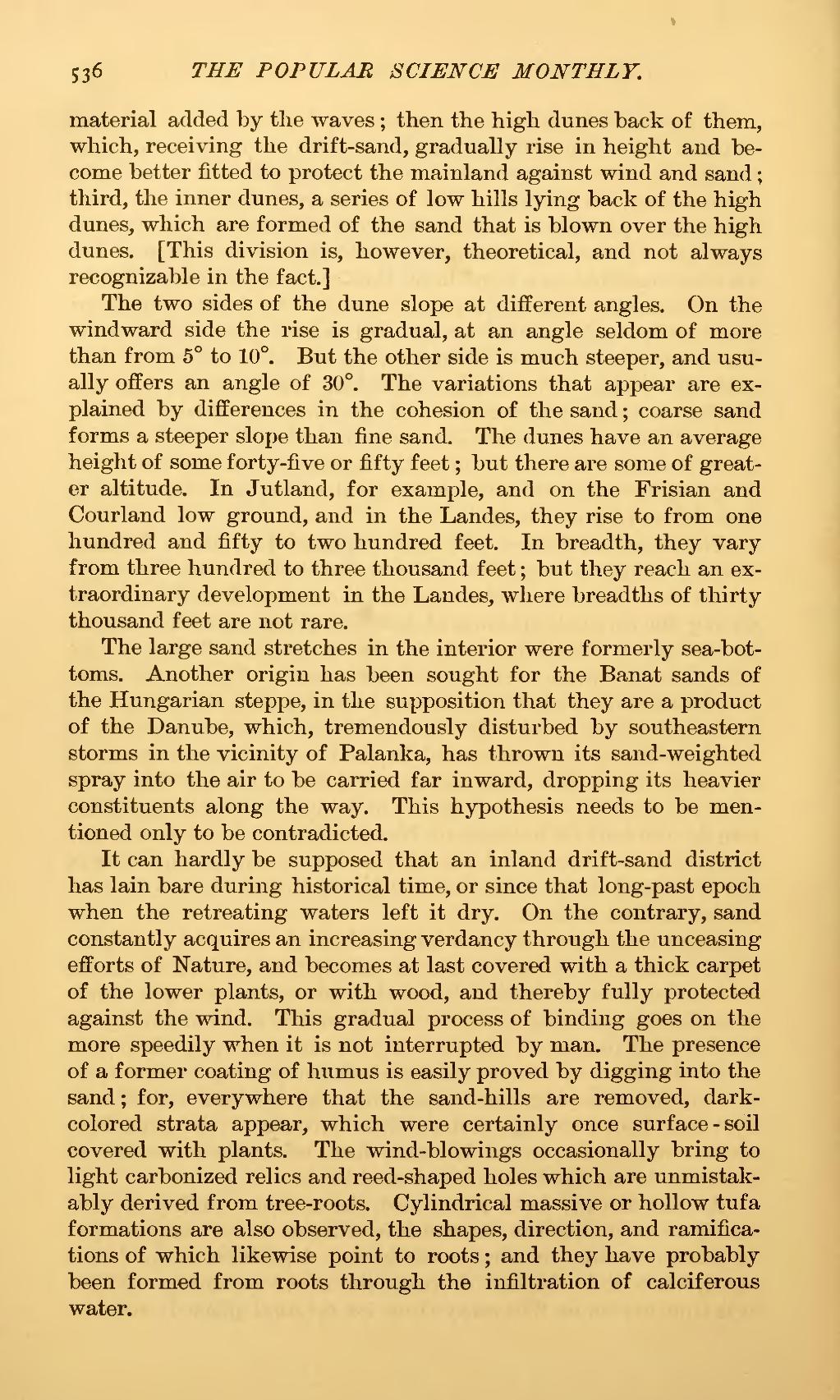material added by the waves; then the high dunes back of them, which, receiving the drift-sand, gradually rise in height and become better fitted to protect the mainland against wind and sand; third, the inner dunes, a series of low hills lying back of the high dunes, which are formed of the sand that is blown over the high dunes. [This division is, however, theoretical, and not always recognizable in the fact.]
The two sides of the dune slope at different angles. On the windward side the rise is gradual, at an angle seldom of more than from 5° to 10°. But the other side is much steeper, and usually offers an angle of 30°. The variations that appear are explained by differences in the cohesion of the sand; coarse sand forms a steeper slope than fine sand. The dunes have an average height of some forty-five or fifty feet; but there are some of greater altitude. In Jutland, for example, and on the Frisian and Courland low ground, and in the Landes, they rise to from one hundred and fifty to two hundred feet. In breadth, they vary from three hundred to three thousand feet; but they reach an extraordinary development in the Landes, where breadths of thirty thousand feet are not rare.
The large sand stretches in the interior were formerly sea-bottoms. Another origin has been sought for the Banat sands of the Hungarian steppe, in the supposition that they are a product of the Danube, which, tremendously disturbed by southeastern storms in the vicinity of Palanka, has thrown its sand-weighted spray into the air to be carried far inward, dropping its heavier constituents along the way. This hypothesis needs to be mentioned only to be contradicted.
It can hardly be supposed that an inland drift-sand district has lain bare during historical time, or since that long-past epoch when the retreating waters left it dry. On the contrary, sand constantly acquires an increasing verdancy through the unceasing efforts of Nature, and becomes at last covered with a thick carpet of the lower plants, or with wood, and thereby fully protected against the wind. This gradual process of binding goes on the more speedily when it is not interrupted by man. The presence of a former coating of humus is easily proved by digging into the sand; for, everywhere that the sand-hills are removed, dark-colored strata appear, which were certainly once surface-soil covered with plants. The wind-blowings occasionally bring to light carbonized relics and reed-shaped holes which are unmistakably derived from tree-roots. Cylindrical massive or hollow tufa formations are also observed, the shapes, direction, and ramifications of which likewise point to roots; and they have probably been formed from roots through the infiltration of calciferous water.

